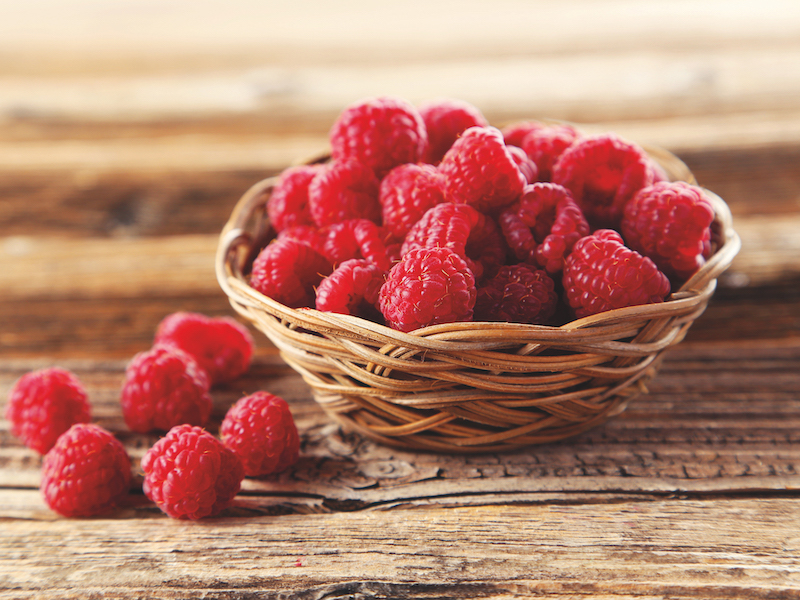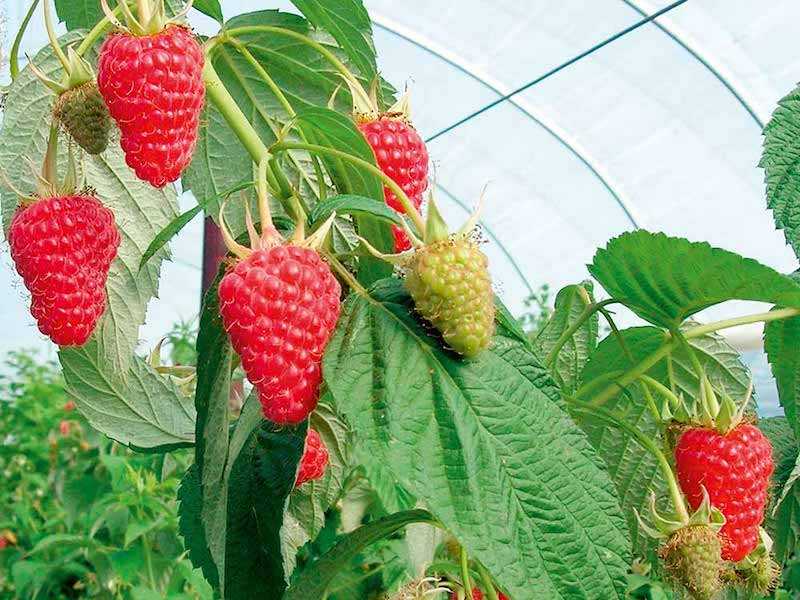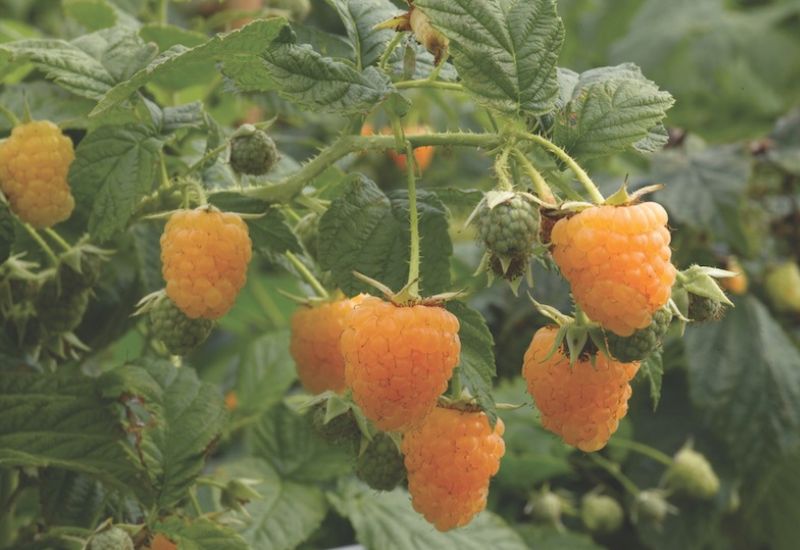Sweet and tangy autumn-fruiting raspberries are easy to grow in your garden, allotment or even patio containers. Simple to prune and producing a crop from their first season, they’re an excellent choice for beginners. Here’s our ultimate guide to successfully planting, pruning and caring for your autumn-fruiting raspberry plants.
How to plant autumn-fruiting raspberries
Popular autumn-fruiting raspberry varieties like ‘Polka’ and ‘Autumn Bliss’ produce fruit from their very first season on the current year’s growth.
Plant your autumn-fruiting raspberry canes 60cm (2′) apart, in straight rows. Allow 2.2 metres (7′) between each row, if you’re planting more than one. These distances are greater than for summer-fruiting varieties to allow room for the development of more canes per plant.
Autumn-fruiting varieties generally bear less fruit than summer-cropping varieties, so it’s a good policy to leave more of them to increase the yield per plant. Fruits will ripen from late summer through to the first frosts, appearing little and often.
How to prune autumn-fruiting raspberries

Raspberries like ‘Autumn Bliss’ are simply pruned to the ground after harvesting
Image: Raspberry ‘Autumn Bliss’ from Suttons
Immediately after planting, cut the canes down to 22cm (9″). When new shoots develop from the base of the plants, cut the old canes away at ground level. In the following years, cut out all canes to ground level during the winter, no later than February.
Established raspberry plants produce plenty of new shoots in the spring. Make sure each row bed is 75-90cm (2½-3′) wide to accommodate the new shoots, and remove any that appear outside the strip. If necessary, thin out the shoots to leave them 8-10cm (3-4″) apart.
You can cheat a small, extra early crop from your autumn-fruiting raspberries by leaving a few canes uncut. This doesn’t appear to significantly reduce the autumn yield.
How to feed and care for autumn-fruiting raspberries

‘Autumn Treasure’ raspberries are ready to harvest in late August and September
Image: Raspberry plants ‘Autumn Treasure’ from Suttons
Autumn-fruiting varieties don’t grow as tall as the summer types, so permanent supports aren’t necessary. You can prevent the canes on the outside of the bed from bending to the ground during the fruiting period by running a string around them for support. Drive some temporary stakes into the ground at the ends of the rows to anchor the string.
Feed your canes in March, with sulphate of potash (35g per sq. metre) and sulphate of ammonia (15g per sq. metre). Poor growth and pale green foliage are a likely indication of nitrogen shortage, in which case a further application of sulphate of ammonia can be given in the late spring. Every two or three years, use a general fertiliser in March instead of separate fertilisers. In late April when the soil is moist, apply a surface layer (mulch) of well rotted manure or garden compost.
Ensure that your raspberry plants have plenty of water as they get established, and again in the summer when the fruits are developing. Apply a minimum of 10-15 litres per sq. metre (2-3 gallons per sq. yard) each time you water. Keep annual weeds under control by light hoeing, but be careful not to harm the shallow roots of your raspberries.
Once fruit appears, protect your raspberries from birds by covering them with a net or erecting a fruit cage.
How to store raspberries
Gluts of raspberries are ideal for making jams, curds and jellies. They also freeze well – choose fruits that are fully ripe, avoid washing them unless necessary and freeze as soon as possible. Spread out the clean fruit in a single layer on a metal tray and freeze. Once the fruits are firm, put them into plastic bags or containers, seal and return to the freezer.
Alternatively, turn the fruits gently in dry sugar until they’re evenly coated. Use about 60g caster sugar per 500g of fruit. Sprinkle a tablespoonful of cold water on the fruits before adding the sugar. After the fruits have been coated, leave them in a covered bowl for 2 hours to allow the sugar to draw sufficient moisture from the fruit to provide a coating of syrup. Pack the coated fruits in containers and place in the freezer.
We hope you’ve found our guide to growing autumn-fruiting raspberries helpful. Share images of your crop with us via social media. We love to hear from you! And if you’re growing summer-fruiting (primocane) raspberries, read our helpful growing guide today.
Lead image: Raspberry ‘All Gold’ from Suttons
Last Updated on September 15, 2025 by Suttons Horticultural Team






Why are my autumn fruiting raspberries still not showing any growth, although it is now end of March.
Excellent help. Regarding raspberry cane maintenance.